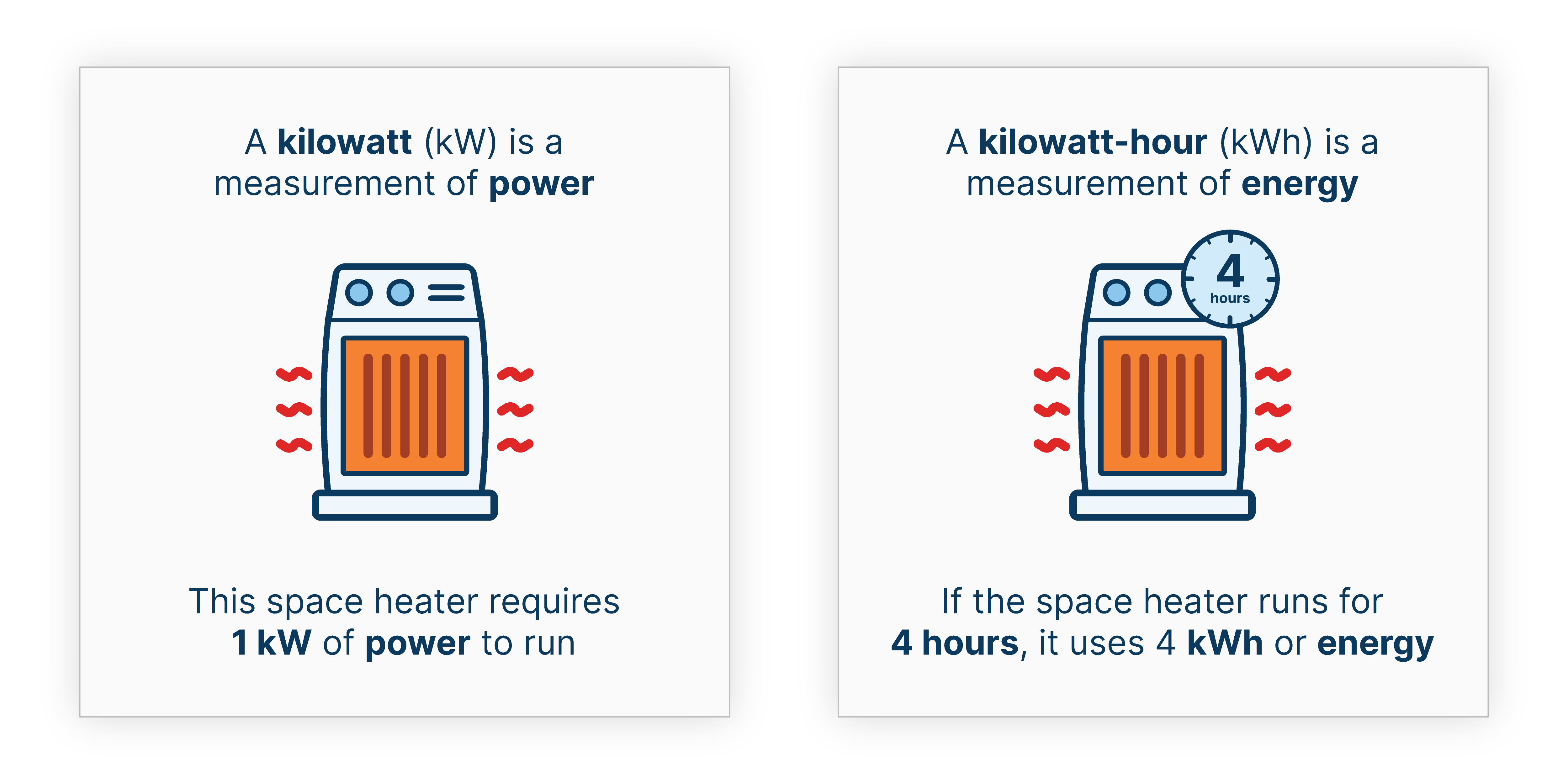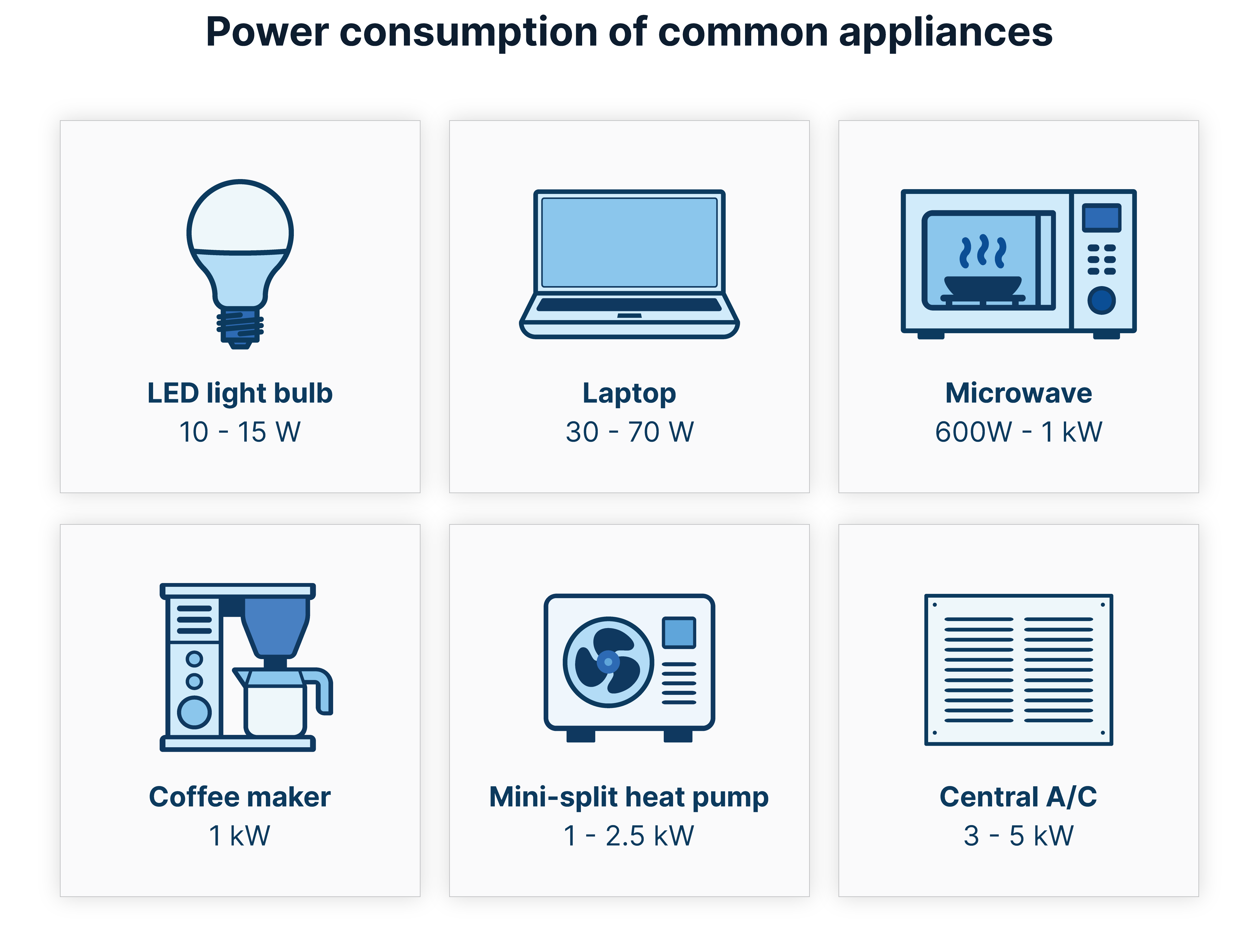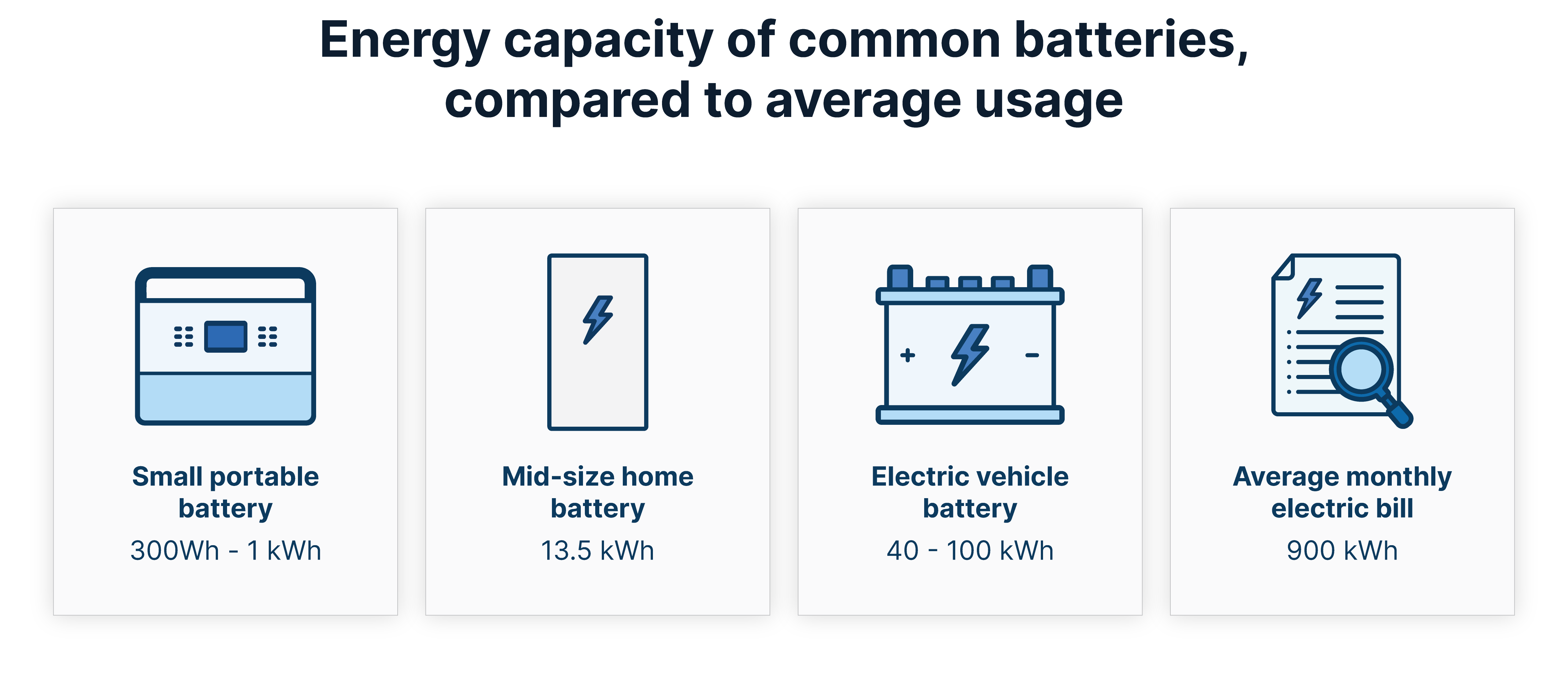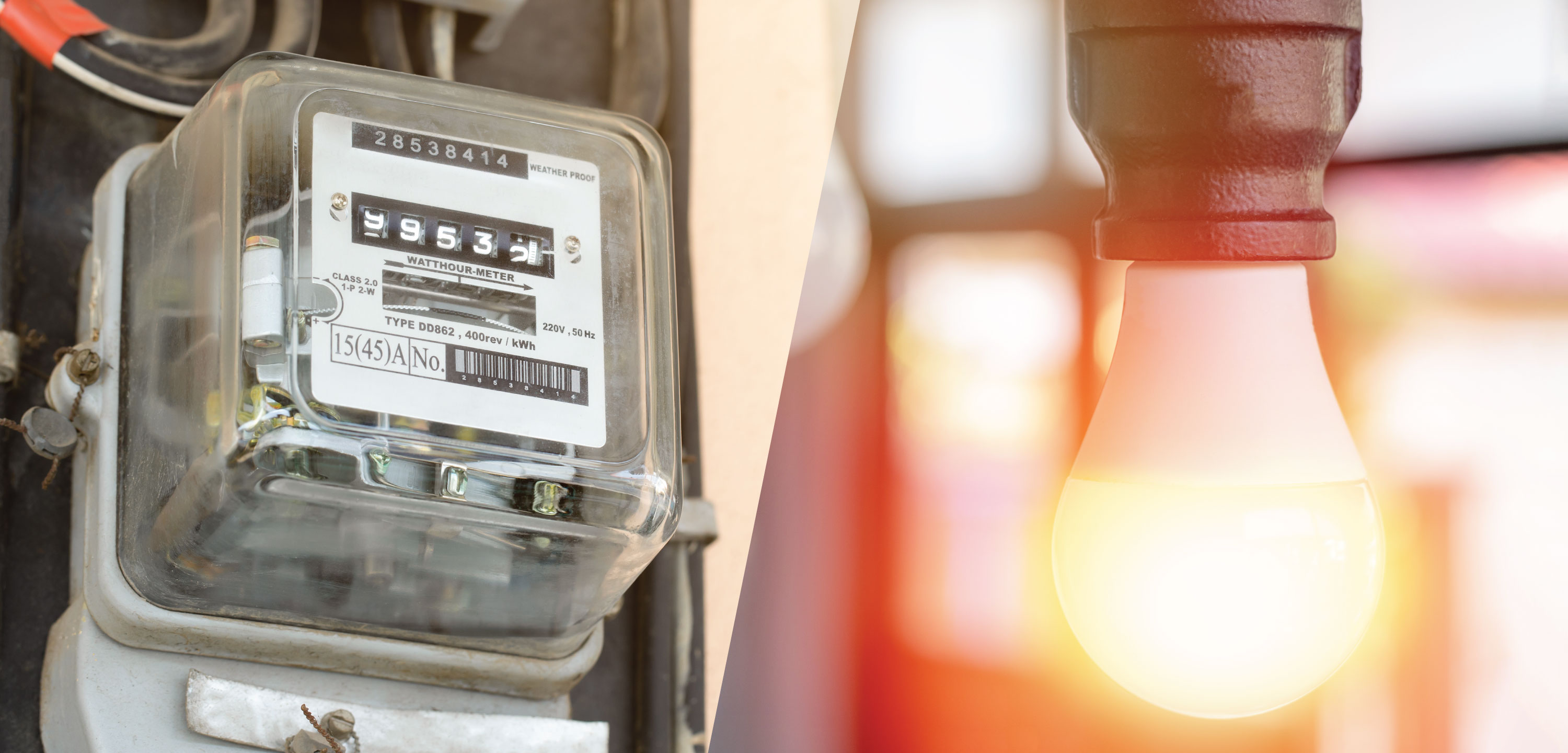Updated 8 months ago
kW vs. kWh: Comparing Watts to Kilowatts and Kilowatt-Hours
Written by Ben Zientara Ben ZientaraBen Zientara is a writer, researcher, and solar policy analyst who has written about the residential solar industry, the electric grid, and state util...Learn more , Edited by Catherine Lane Catherine LaneCatherine has been researching and reporting on the solar industry for five years and is the Written Content Manager at SolarReviews. She leads a dyna...Learn more

Why you can trust SolarReviews
SolarReviews is the leading American website for solar panel reviews and solar panel installation companies. Our industry experts have a combined three decades of solar experience and maintain editorial independence for their reviews. No company can pay to alter the reviews or review scores shown on our site. Learn more about SolarReviews and how we make money.
Key takeaways
To convert watts to kilowatts, multiply the number of watts by 1,000.
A kilowatt, or kW, is a measure of power, which is the rate at which electricity is being generated or consumed at any given moment.
A kilowatt-hour, or kWh, is a measure of energy, which is the total amount of electricity used over time.
For example, if an electric heater uses 1 kW of power to run, and is run for four hours, then it will use 4 kWh of energy.

kW and kWh conversion table
Convert watts to kilowatts by multiplying by a thousand. Here’s a table of common kilowatt conversions:
Power | Energy | ||
|---|---|---|---|
1,000 watts (W) | 1 kilowatt (kW) | 1,000 Wh | 1 kilowatt-hour (kWh) |
1,000 kW | 1 megawatt (MW) | 1,000 kWh | 1 megawatt-hour (MWh) |
1,000 MW | 1 gigawatt (GW) | 1,000 MWh | 1 gigawatt-hour (GWh) |
1,000 GW | 1 terawatt (TW) | 1,000 GWh | 1 terawatt-hour (TWh) |
Converting watts to watt-hours is also easy. Simply take the number of watts of power an electrical device requires and multiply it by the number of hours. For example, a 100-watt light bulb turned on for six hours would use 600 Wh.
If you need to convert kilowatts to watts, simply divide by 1,000.
Because wattage is part of the metric system, the prefixes are the same as length in meters. For example, kilo-, mega-, giga-, and tera- refer to thousands, millions, billions, and trillions of watts. Megawatts and above are mostly used to describe the generating capacity of power plants or the energy needs of the electric grid.
For smaller numbers, you can go down to thousandths of a watt, which are milliwatts (mW), but it isn’t common to measure electricity lower than that.
What is a kilowatt (kW)?
A kW (kilowatt) is a unit of power.
Power is the rate of electricity that is generated or consumed at any given moment. Technically, a watt is a measurement of energy transfer equal to one joule per second, but since nobody outside a laboratory has uttered the word “joule” since high school physics class, we’ll stick with “watt.”
Electrical power is measured in watts (W) for small things like LED light bulbs and kW for large things like EV chargers and solar panel arrays.
One kW equals 1,000 W.

What is a kilowatt-hour (kWh)?
A kWh (kilowatt-hour) is a unit of energy.
Energy is the total amount of electricity generated or consumed over time. Energy is used for things like the energy storage capacity of a battery and how much electricity is used on your utility bill. The capacity of small portable batteries is measured in watt-hours (Wh), while electric utilities charge a certain price per kilowatt-hour of energy usage.
Just like with power, one kWh equals 1,000 Wh.

Why are kW and kWh important?
Understanding the difference between kW and kWh is an important first step toward managing your energy consumption. You can look at the required power draw for your electrical appliances and devices and gauge the amount of energy you will use over a certain period.
Or if you’re trying to figure out how long it will take to charge an electric car, you can multiply the kW output of the charger by the kWh needed to charge your car’s battery.
It’s also important for people who want solar panels and energy storage because the terms are used extensively in the industry. Knowing your power and energy needs is key to getting the right-sized solar and battery system.
How kW and kWh are used in solar power
Knowing the difference between kW and kWh is critical when comparing solar quotes. A quote will include both system size (measured in kW) and estimated annual energy production (measured in kWh) and energy bill savings over time.
System size is the same as the power output of a solar array under standard test conditions (STC—the solar industry loves its acronyms). It is measured in kW of DC power, which basically just means that the panels will put out that much power when the sun is shining brightly.
So, for example, an array with fifteen 400-watt solar panels will result in a system size of 6 kW. When you’re looking at solar estimates, make sure that you’re comparing systems by kW DC. Your power consumption determines how many solar panels you need.
Moving on, energy production estimates for a solar array are based on a few factors:
The system size in kW
The amount of peak sun hours your location gets per day
Any shade that might affect power output
The conversion efficiency of your solar inverter
Electric bill savings are then calculated based on the expected energy production, considering your current utility rates and growth in those rates.
How kW and kWh are used for batteries
Knowing the difference between kW and kWh is arguably the most important thing for people considering a home solar battery. A battery is a finite source of energy, unlike the electric grid, which has an unlimited amount of power (unless there’s an outage).
Batteries are measured in a couple of different ways:
kWh of energy storage capacity
kW of maximum continuous power output
Calculating home battery size
If you’re hoping to calculate the size of a backup battery, you need to consider these factors.
First, you’ll need to understand the daily electricity usage of your essential appliances, which will determine how much capacity you’ll need. Second, you’ll have to look at the power draw of all those appliances and make sure a battery’s output is at least enough to match that when all those appliances are running at the same time.
This can all get pretty complicated, and adding other things like volts and amps can make it even more complicated. It’s usually best to develop a basic knowledge of how batteries work so you can have an informed discussion with a professional who can do the hard work of sizing and installing your battery system.
Ben Zientara is a writer, researcher, and solar policy analyst who has written about the residential solar industry, the electric grid, and state utility policy since 2013. His early work included leading the team that produced the annual State Solar Power Rankings Report for the Solar Power Rocks website from 2015 to 2020. The rankings were utilized and referenced by a diverse mix of policymakers, advocacy groups, and media including The Center...
Learn more about Ben Zientara